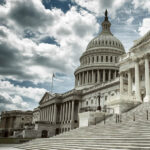Last week, the U.S. Department of Commerce announced Section 232 investigations into medical equipment and robotics and industrial machinery. The Commerce Department—which has been conducting the investigations since the beginning of September—is requesting public comments on the demand, domestic production, and foreign supply chains for industrial robots, programmable mechanical systems, PPE, medical consumables, and medical devices—among other products. Comments are due on October 17th.
The investigations cover a potentially vast swath of products; the medical devices probe could apply to products ranging from N95 masks and medical gowns to complex devices like pacemakers and MRI machines. The machine tools and robotics probe includes a wide variety of industrial tools including cutting, welding, and handling tools as well as industrial ovens, robots, and laser tools. Drones and pharmaceuticals are not within the scope of either investigation: both are the subject of separate Section 232 probes.
Later in the week, in three social media posts, President Trump announced new tariffs on patented drugs, heavy-duty trucks, and furniture, the result of prior Section 232 investigations initiated earlier this year. The duties, which the President said would be “starting October 1, 2025,” include a 50% tariff on kitchen cabinets and bathroom vanities, 100% tariffs on branded drugs, 25% tariffs on heavy-duty trucks (those with a gross vehicle weight rating of 26,001 pounds or more), and an 30% tariff on upholstered furniture. The Federal Register Notices setting out the details of these announced tariffs have yet to be released.
With respect to pharmaceuticals, based on the President’s Truth Social post, it appears as if generic drugs may escape the tariffs. Many companies and trade associations argued to the Administration that the reimbursement rates and margins on generics are so low that tariffs would lead to shortages. Again, we do not yet have the final details, but it appears these arguments may have prevailed. Also significantly, it sounds as if there will be an exemption for branded drugs if a company is building a plant in the United States. This would be a novel basis for exemption. Will existing U.S. plants entitle companies to the exemption? Will it apply regardless of the ratio of U.S. manufacturing capacity to import volumes? It appears as if the Administration has considered the complexities of the pharmaceutical market in crafting a different type of tariff policy approach, concepts from which could potentially be deployed in other cases and sectors going forward.
October 1 seems awfully ambitious as an effective date given the complexities of implementing these policies. It could be that we will see the Federal Register notices by October 1, but the effective date(s) could still be a bit later.
Certain countries or blocs who have agreed to final or framework trade deals in recent months, like Japan, the United Kingdom, and the European Union, may be spared from many of the new duties—for example, a White House statement from July regarding the EU deal stated that the EU would pay a 15% tariff rate including on autos and pharmaceuticals, but it remains to be seen whether that single non-stacking rate will be applied to products that become the subject of new 232 tariffs.

